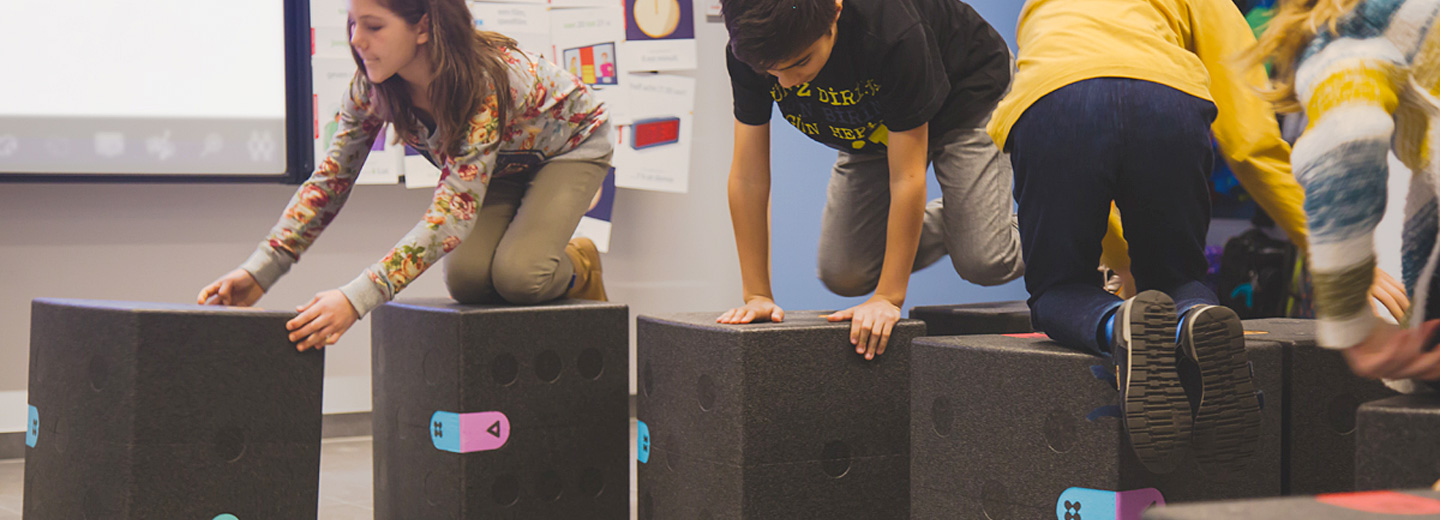
Tilt your chair and learn more
The world's first interactive learning furniture was designed at SDU. It is now being put into production and is already gaining popularity in Denmark and abroad.
By Marianne Lie Becker, mlbecker@health.sdu.dk
Imagine a stool that tilts all on its own. That’s what iMO-LEARN can do, depending on which way you turn it.
The newly developed classroom furniture breaks with the traditional "sit still and listen" approach to teaching. Movement is precisely the idea behind the newly developed classroom furniture, which was tested on Danish primary and lower secondary school students.
- We know that physical activity facilitates learning, and this furniture invites far more physical activity and creativity than a regular chair, says Lars Elbæk, Head of Research Unit in Physical Education and Innovation in Learning & Talent in Sport at SDU.
Tilt for the answer
The innovative furniture was developed in cooperation between SDU and the SIS International furniture company in Middelfart. The stool can do a whole lot more than just tilt too.
- The furniture is equipped with an accelerometer, which detects your movements so that the furniture can be used for problem-solving and answering questions. For example, you can select an answer to a multiple choice math problem or work on grammar and spelling exercises just by tilting the stool, says Lars Elbæk.
SIS has built on SDU's concept, so teachers and students themselves can help develop learning exercises for the platform.
- This was the ideal way for us to further develop our research, says Lars Elbæk.
The furniture is designed so that it fits together. In pairs, as a semicircle or a full circle; the shape of one piece of the furniture is exactly 1/24. In this way, the furniture can be used in classroom sets and for group work.
Throwing around furniture
iMO-LEARN may also be one of the only kinds of furniture that is meant to be thrown around, such as in the exercise “Toss a Word Class” during Danish class. This multi-functionality posed great challenges in the development process.
- It was hard to find a material that was lightweight, strong and inexpensive, says Lars Elbæk.
They ended up choosing a type of hard polystyrene foam, a material normally used in car bumpers. It is durable while at the same time lightweight, and allows them to keep the price down too.
Better health and education
The furniture will be on the market before long, and China, among other countries, is already showing a great deal of interest in it.
Lars Elbæk is happy that the project, which has been under way for four years, is now hitting its mark. He is also pleased that they have succeeded in developing a piece of furniture that in many ways fits with modern views on learning.
- We know that more physical activity in class reduces the risk of lifestyle diseases, problems with the musculoskeletal system and overweight, but at the same time, the children are also paying better attention, says Lars Elbæk.
More abilities at play
Teaching that incorporates physical activity and play often makes more room for everyone, and more of a need for several different abilities than those that come into play in traditional teaching.
- The students gain a better understanding and more respect for each other’s abilities, so physical activity and play can be a good tool when working with a class’s social structure and creating opportunities for inclusion, says Lars Elbæk.
Photo: SIS.
Check out the website for the development project at www.imolearn.dk